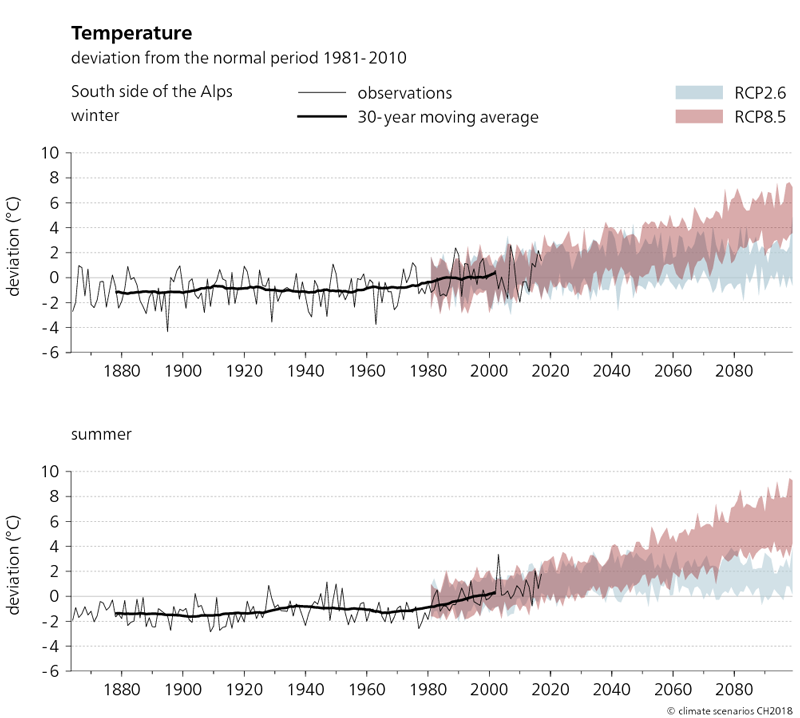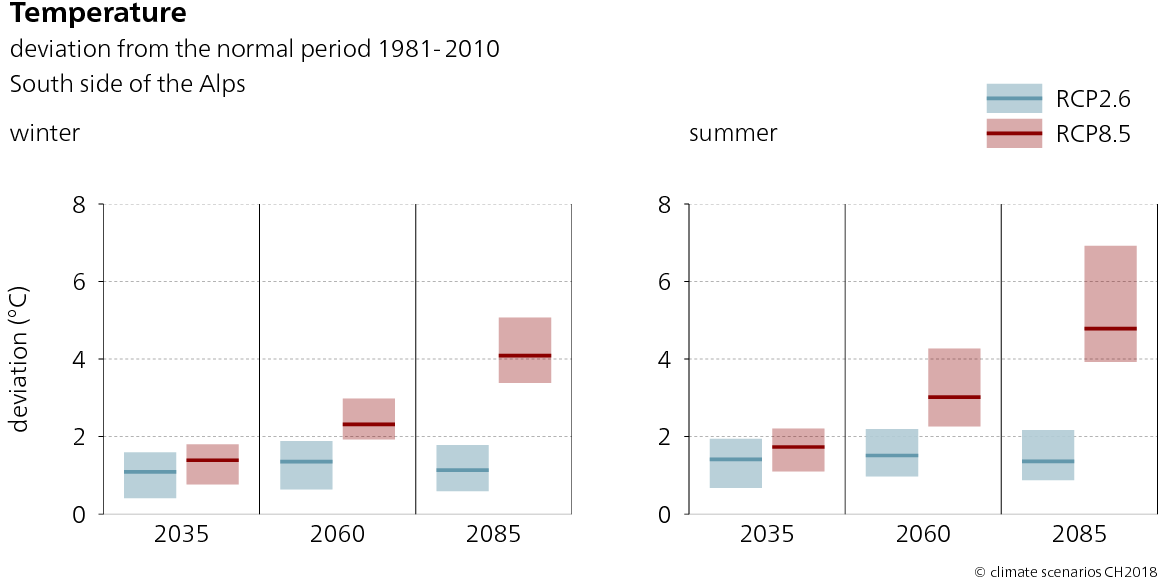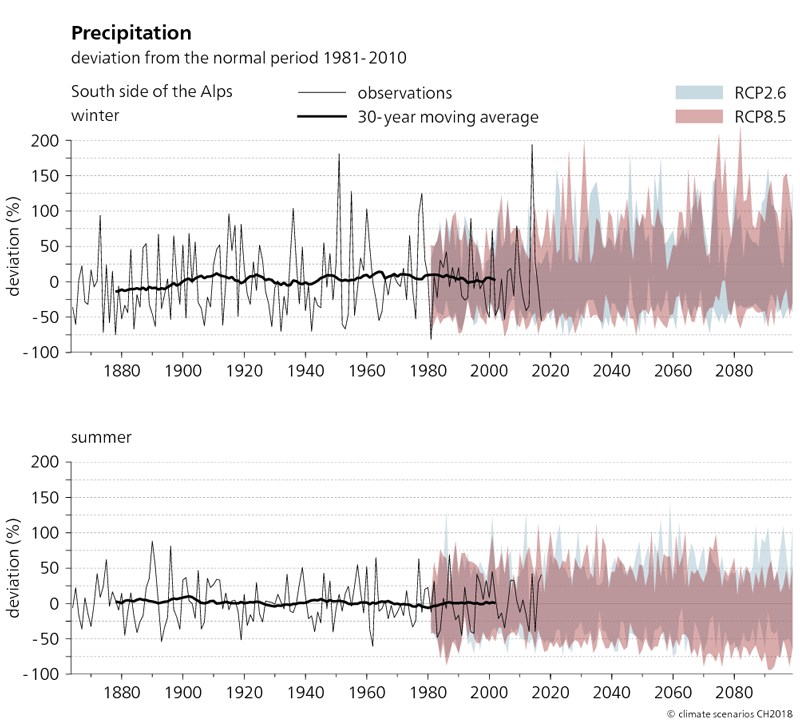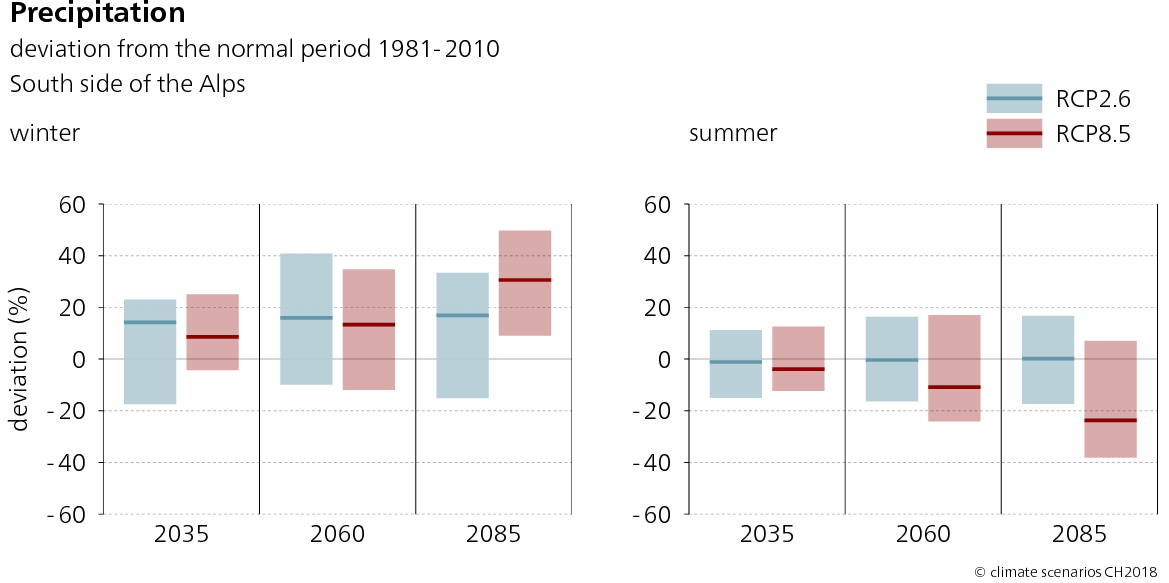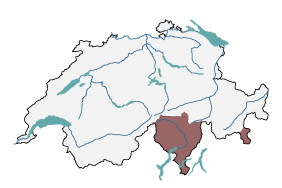The influence of the Mediterranean results in mild winters and warm, damp summers in the region south of the Alps. The frequently occurring northern foehn also contributes to the mild winter temperatures. The greatest volume of precipitation falls in spring and autumn.
Temperature
Since measurements began in 1864, temperatures south of the Alps have risen significantly. How severely and quickly warming takes place depends on how the amounts of greenhouse gases in the atmosphere change. If greenhouse gas emissions continue unabated at the current rate (RCP8.5 emission scenario), the annual average temperature south of the Alps can be expected to rise by an additional 2.1–3.7°C by the middle of this century. In summer, the warming will be greater than in winter. If a rapid reduction in greenhouse gas emissions (RCP2.6) can be achieved globally, however, the additional warming can probably be limited to 0.8°C to 1.9°C.
Precipitation
Average precipitation in southern Switzerland changed little in the 20th century. Without effective climate change mitigation (RCP8.5), precipitation in the winter is likely to increase in the future: By the middle of this century, climate models indicate a change of between -13% and 36% in the winter months (December to February). In summer, the downward trend is less pronounced south of the Alps than it is north of the Alps. The change in precipitation in this season ranges between -22% and +17% on average over the Alpine region; however, most model calculations do show a reduction in precipitation volumes. Climate change mitigation would moderate these changes significantly.
Heavy rainfall events are likely to increase in frequency and intensity in all seasons. In general, the uncertainty of changes in precipitation levels is greater than for changes in temperature.
What do RCP2.6 and RCP8.5 mean? You can find an explanation of the emission scenarios here.
Additional Information
Links
Observed climate change in Switzerland
Climate change scenarios CH2018 for the Jura region
Last modification 22.12.2021
Contact
Federal office of meteorology and climatology MeteoSwiss
Operation Center 1
P.O. Box
CH-8058 Zurich-Airport


